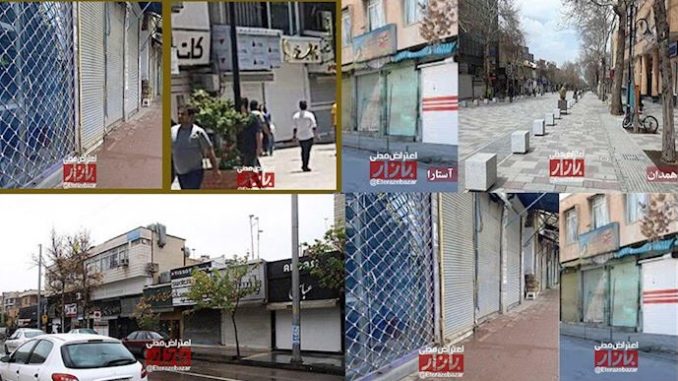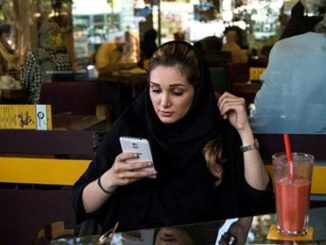
The merchants in the city of Tabriz (northwest Iran) went on strike on Saturday once again, closing down their shops and refusing to open for business. Shops in Tarbiat Street, and the fruits and vegetables market, as well as other parts of the city’s bazaar were closed to protest high prices, shortage of goods and deteriorating economic conditions, the PMOI reported on Sunday.
Earlier, Bazaar store-owners of Tabriz had gone on strike first on Wednesday, November 14, protesting skyrocketing prices, lack of goods and a decreasing number of customers.
Meanwhile, the cities of Hamedan and Astara withnessed strikes by many shop owners who are protesting poor and deteriorating economic conditions. Similar situation was observed in the cities of Sanandaj and Maragheh.
In the past months, merchants in different cities have intermittently went on strike in protest to the Iranian regime’s corruption, its mishandling of the country’s economy and the nosedive of the value of rial, Iran’s national currency.
In April, merchants in several western provinces of Iran went on strike in protest to the closure of border gates and the increase in tariffs. In June, strikes in Tehran’s Grand Bazaar led to clashes between merchants and security forces. In the past decades, the Iranian regime has relied on the bazaar as its traditional base of support. The regime is now seeing its power dwindle as merchants and shop owners from more cities join the strikes.
The strikes of merchants are happening against the backdrop of ongoing protests across the country. On Saturday, Iran’s truckers entered the 17th day of their nationwide strike in protest to poor economic conditions. This week, Iran’s teachers also held a two-day strike in protesting government’s corruption and lack of funding for school and education among other demands.
In December, protests erupted across the country in more than 140 cities over poverty, unemployment and government corruption. The protests soon turned into anti-government demonstrations that called for regime change in Iran. Since then, protests and strikes have been regularly flaring up in different parts of the country.
The Iranian regime has tried to blame economic woes on foreign states. But the people of Iran, who have been living under the duress imposed by the mullahs regime for the past four decades, have no doubt who is responsible for the country’s economic problems. In the protests, the Iranian people are calling the regime off for squandering the country’s riches in fueling sectarian violence in neighboring countries and wars in Yemen and Syria.
On social media, Iranian users are posting pictures and videos that are comparing the luxurious life of the ruling elites to the miseries of the ordinary people.
As strikes and protests continue, the regime of Tehran is finding itself in an inescapable impasse.




